 | ÐлекÑÑоннÑй компоненÑ: PVI5080 | СкаÑаÑÑ:  PDF PDF  ZIP ZIP |
Äîêóìåíòàöèÿ è îïèñàíèÿ www.docs.chipfind.ru
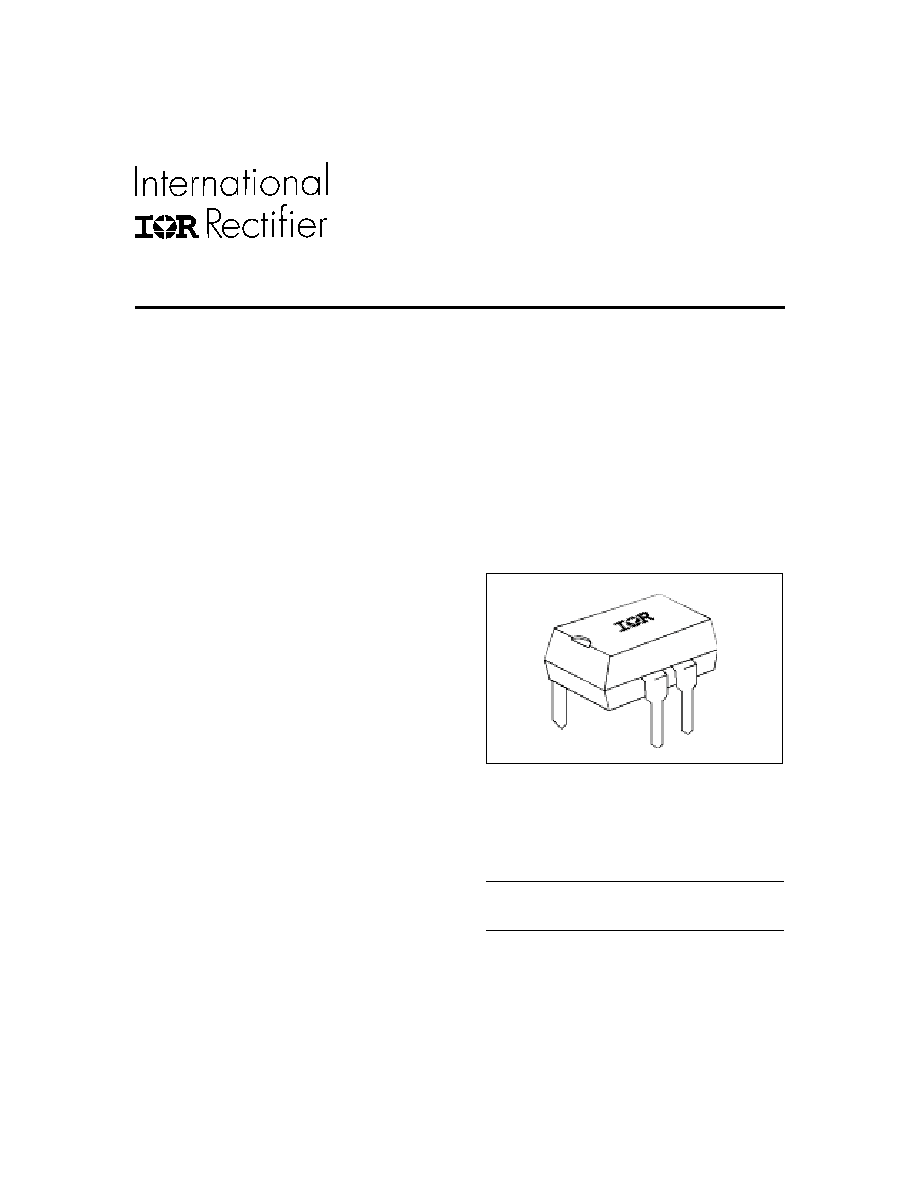
OBSOLETE
Data Sheet No. PD 10029-G
Series PVI
Photovoltaic Isolator
5-10 Volt Output
General Description
The PVI Photovoltaic Isolator generates an electri-
cally isolated DC voltage upon receipt of a DC input
signal. The input of the PVI is a light-emitting diode
(LED) which is optically coupled to, but electrically
isolated from, the output. A GaAIAs LED is used for
high output and maximum stability. The infrared
emission from the LED energizes, by photovoltaic
action, a series connection of silicon PN junctions. A
unique alloyed junction stack which is edge-illumi-
nated is used to form the output photovoltaic genera-
tors. This novel structure produces extremely high
operating efficiency. Units are available with a single
5-volt output or dual 5-volt outputs which can be
series connected to produce 10 volts.
A PVI can serve as an isolator, a coupler and as an
isolated voltage source. As an isolator, the PVI can
serve as the key component in a solid state relay cir-
cuits. The PVI is ideally suited for driving power MOS-
FETs and IGBTs or sensitive gate SCRs to form solid
state relays.
As a coupler, the PVI can sense a low-level DC sig-
nal and transmit a voltage signal to an electrically
remote circuit. As a voltage source, the PVI can
function as a `DC transformer' by providing an
isolated, low-current DC source for biasing or
supplying power to low quiescent current electronic
devices.
Conventional optocouplers merely modulate the
resistance of an output device such as a transistor,
diode or resistor. Such optocouplers require a sepa-
rate voltage source to detect the presence of an
input signal. In contrast, a PVI actually transmits (and
transforms) energy across the isolation barrier and
directly generates an output voltage. This DC volt-
age, available at a 2500VAC isolation level, gives cir-
cuit designers a new and uniquely useful electronic
component.
Features
Isolated Voltage Source
s
s
s
s
s
MOSFET Driver
s
s
s
s
s
Up to 10µA Output
s
s
s
s
s
Fast Response
s
s
s
s
s
GaAIAs LED
s
s
s
s
s
2500V (RMS) Isolation
s
s
s
s
s
8-pin DIP Package
s
s
s
s
s
Single or Dual Output
s
s
s
s
s
Part Identification
Part Number
Outputs
Output
Output
Voltage
Current
PVI5050
1
5.0V
5µA
PVI5080
1
5.0V
8µA
PVI1050
2
5.0/10.0V
10/5µA
Replaced by PVI-N
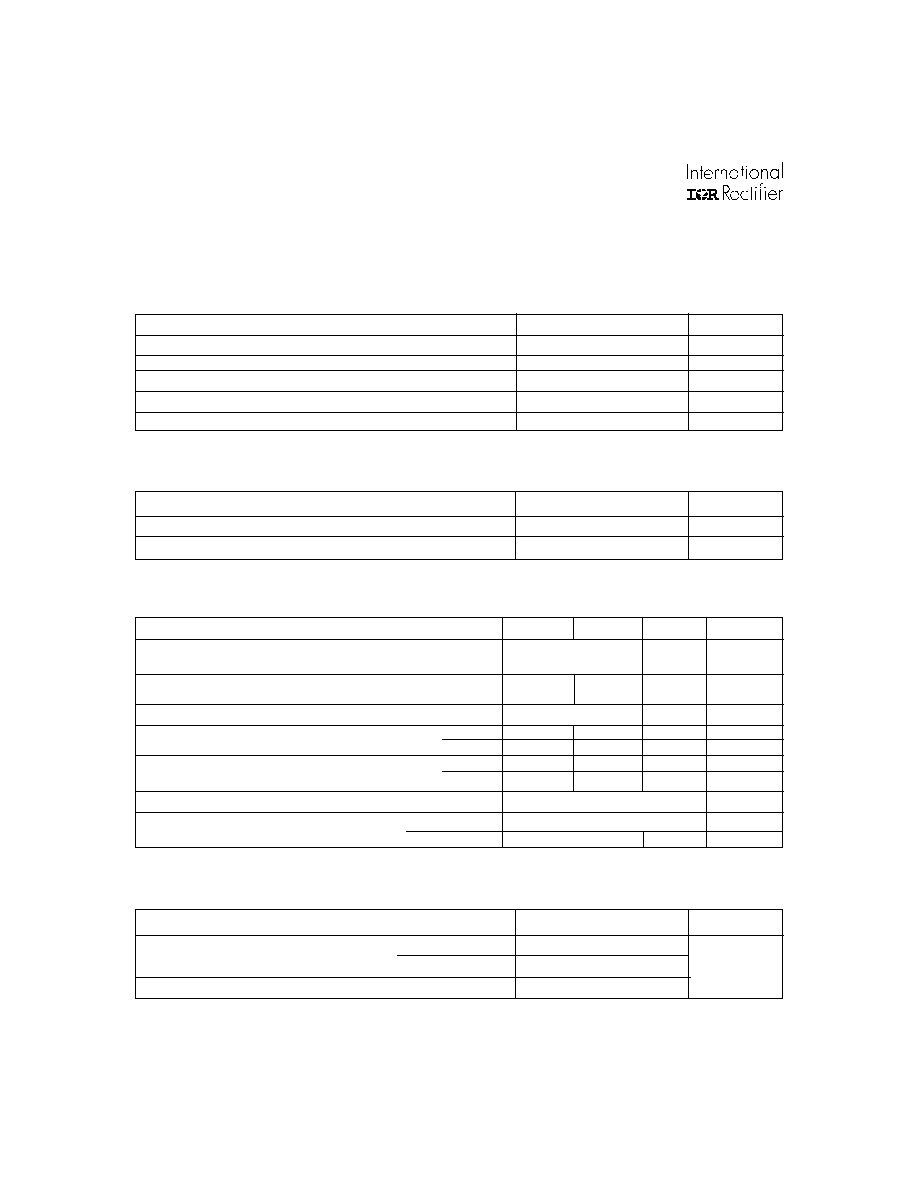
Series PVI
2
Replaced by PVI-N
OBSOLETE
INPUT CHARACTERISTICS
PVI Series
Units
Input Current Range
(see figure 6)
2.0 to 50
mA (DC)
Maximum Forward Voltage Drop @ 10mA, 25°C
(see figure 7)
1.4
V (DC)
Maximum Reverse Voltage
7.0
V(DC)
Maximum Reverse Current @ -7.0V (DC), 25°C
100
µA(DC)
Maximum Pulsed Input Current @ 25°C
(see figure 8)
1.0
A(peak)
Electrical Specifications (-40
°
C
T
A
+85
°
C unless otherwise specified
)
OUTPUT CHARACTERISTICS
PVI Series
Units
Maximum Forward Voltage @ 10µA
8.0 per channel
V
(DC)
Maxiumum Reverse Current @ -10VDC
10
µA
(DC)
COUPLED CHARACTERISTICS
PVI5050
PVI5080
PVI1050
Units
Minimum Open Circuit Voltage
@ 10mA, 25°C (see figures 1 to 4)
5.0V
5.0V/channel
V (DC)
10V series
Minimum Short Circuit Current
@ 10mA, 25°C (see figures 1 to 3)
5µA
8µA
5.0µA/channel
µA (DC)
10µA parallel
Maximum Capacitance (Input/Output)
1.0
2.0
pF
Maximum Turn-On Time @ 20mA Input, 25°C
RL=5.0M
30
30
30
µs
(see figure 9)
RL=1.0M
40
40
40
µs
Maximum Turn-Off Time @ 20mA Input, 25°C
RL=5.0M
400
400
400
µs
(see figure 9)
RL=1.0M
100
100
100
µs
Insulation Resistance @ 90VDC (Input/Output)
10
12
Dielectric Strength
Input/Output
2500
V(RMS)
Between Outputs
N/A
1200
V(DC)
GENERAL CHARACTERISTICS
PVI Series
Units
Ambient Temperature Range
Operating
-40 to +100
Storage
-40 to +100
°C
Maximum Lead Temperature
(1.6mm below seating plane for 10 seconds)
280
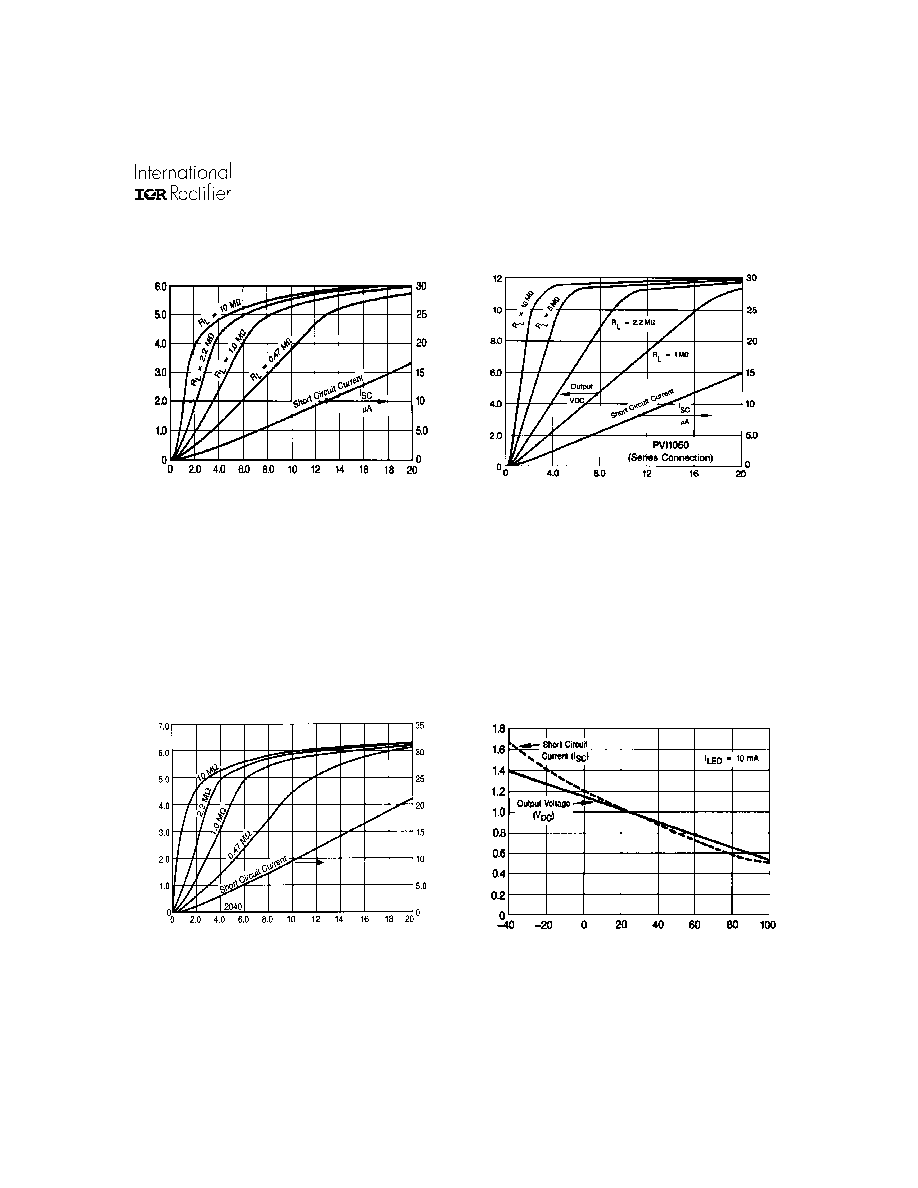
Series PVI
3
Replaced by PVI-N
OBSOLETE
Output V
o
ltage (VDC)
Figure 1. PVI5050 Typical Output Characteristics
Input Current (mA)
Output Short Circuit Current (µA)
Output V
o
ltage (VDC)
Figure 2. PVI1050 Typical Output Characteristics
Input Current (mA)
Output Short Circuit Current (µA)
Output V
oltage (VDC)
Figure 3. PVI5080 Typical Output Characteristics
Input Current (mA)
Output Short Circuit Current (µA)
Normalized Output
Figure 4. Typical Variation of Output
Ambient Temperature (°C)
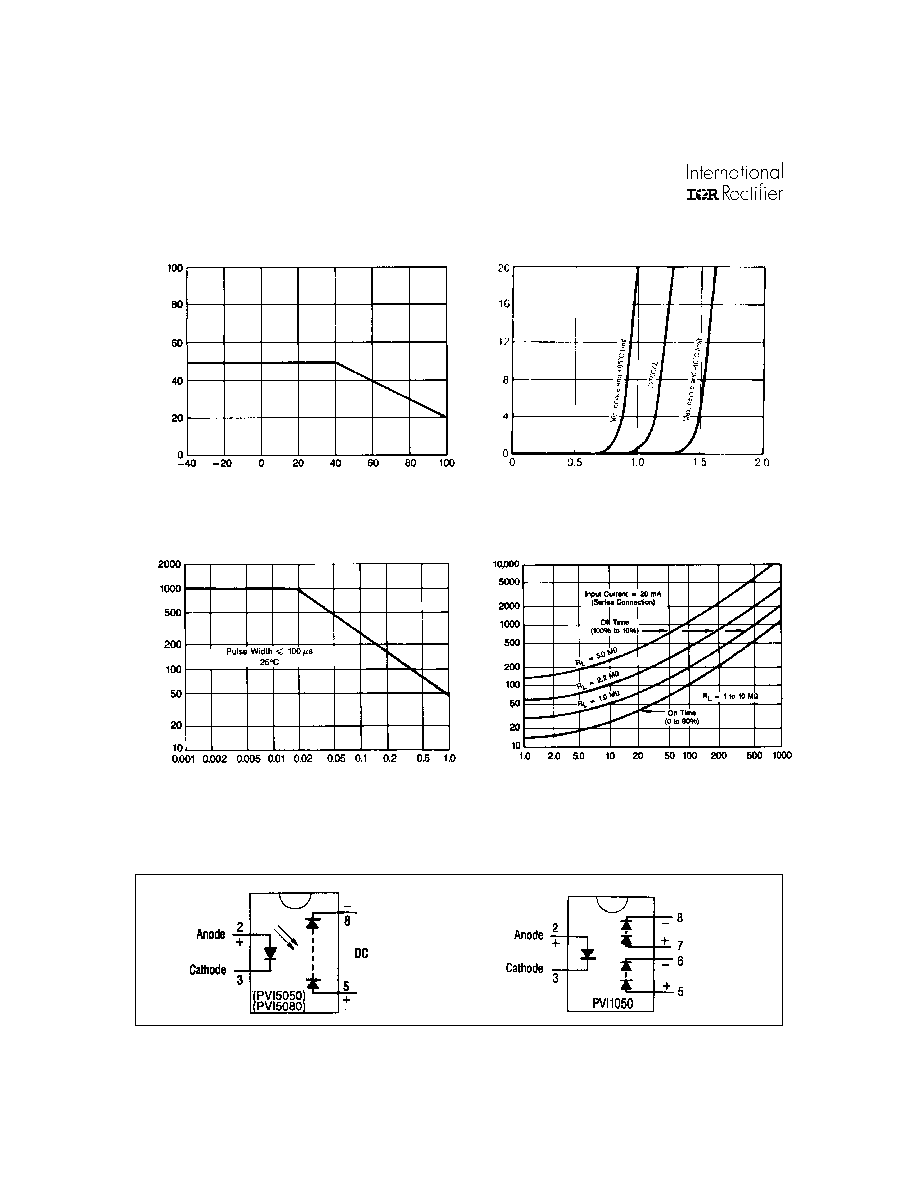
Series PVI
4
Replaced by PVI-N
OBSOLETE
Duty Cycle
Allowable Input Pulse Current (mA)
Figure 6. Input Current Derating
Ambient Temperature (°C)
Allowable Input Current (mA)
Figure 7. Input Characteristics
Input Current (mA)
LED Forward Voltage Drop (VDC)
CAUTION: Provide current limiting
so that 50mA maximum steady-
state control current is not
exceeded.
Figure 9. PVI1050 (PVI5050) Typical Response Time
Response T
ime (µs)
Load Capacitance (pF)
Wiring Diagram
Figure 8. Input Pulse Capability
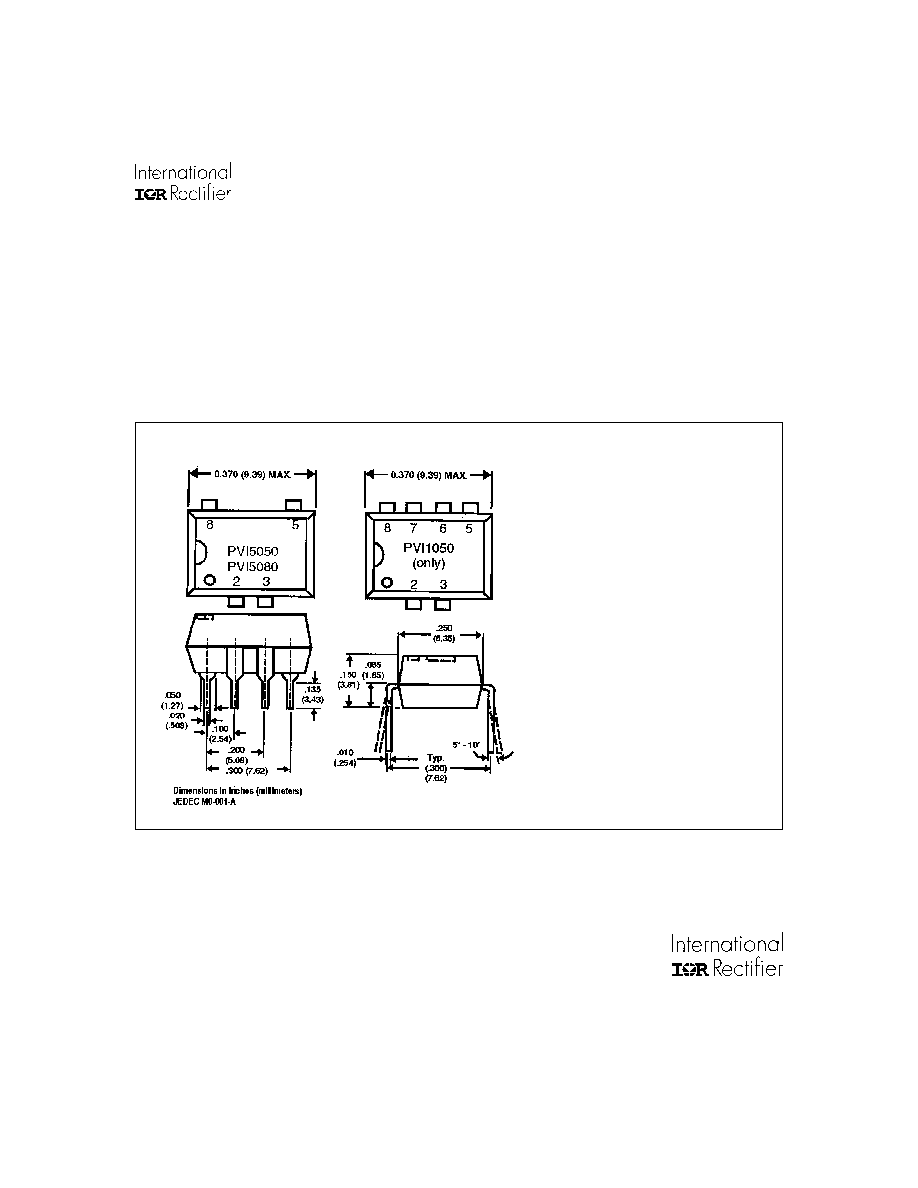
Series PVI
5
Replaced by PVI-N
OBSOLETE
Application Note:
The outputs of the PVI1050 (pins 5-6 and 7-8) may be placed in series connection to produce a 10-volt output
with a 5µA minimum short circuit current. Alternatively, the two ouptut of the PVI1050 may be connected in paral-
lel to produce a 5.0-volt ouput with a 10µA minimum short circuit current.
The two outputs of the PVI1050 may be applied separately with a maximum 1200VDC between the outputs.
Input-to-output isolation to either output is 2500V (RMS).
IR WORLD HEADQUARTERS: 233 Kansas St., El Segundo, California 90245 Tel: (310) 252-7105
Data and specifications subject to change without notice. 12/6/2000
(Dimensions in millimeters (inches))
Mechanical Specifications:
Package: 8-pin DIP
Tolerances: .015 (.38) unless otherwise
specified
Case Material: molded epoxy
Weight: .07 oz. (2 gr.)
Case Outline




